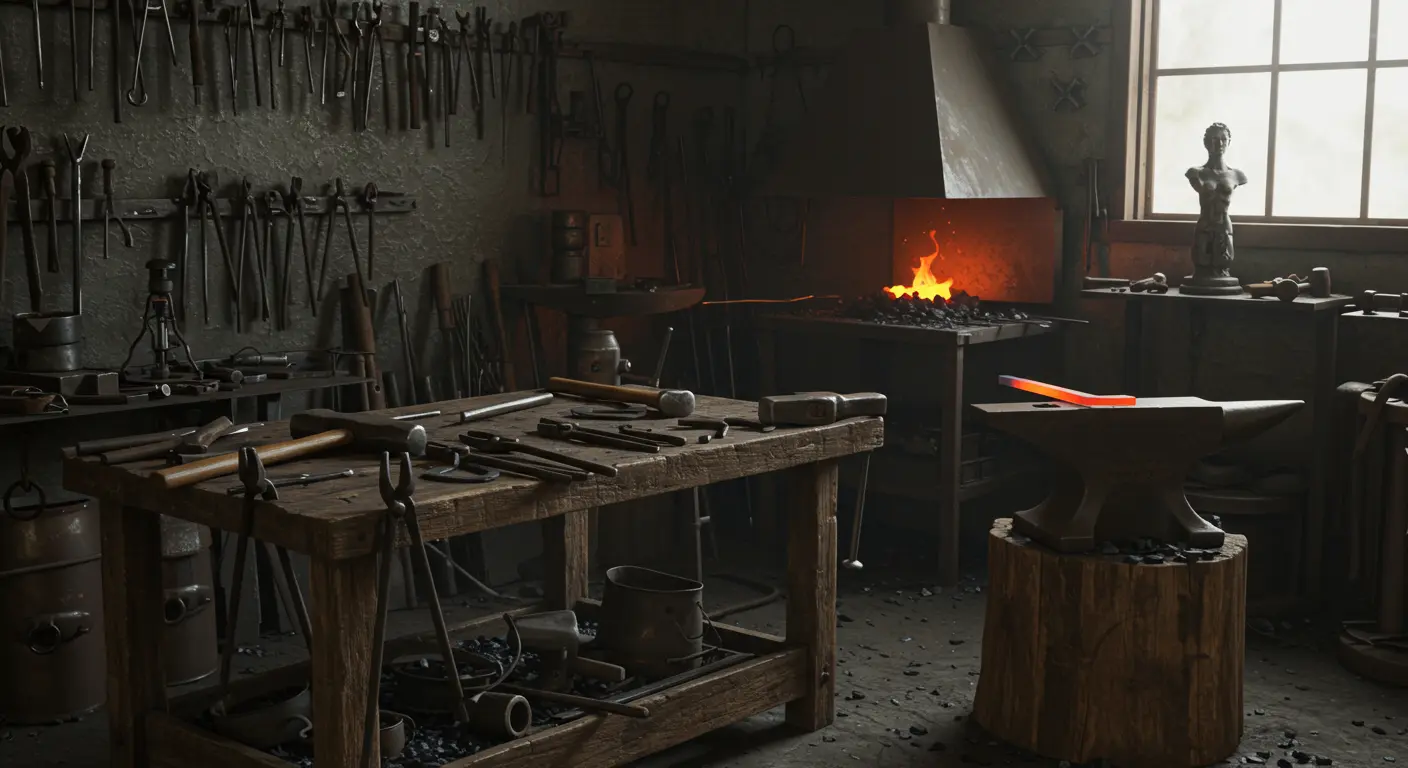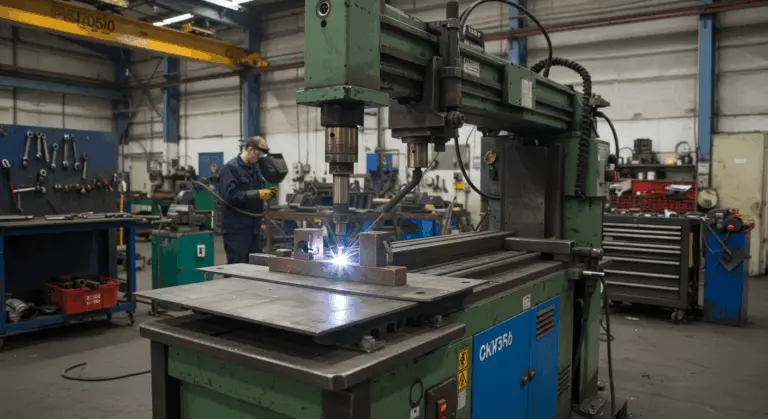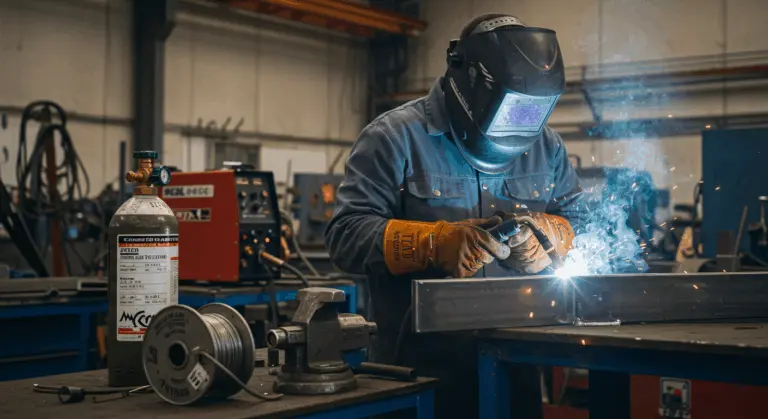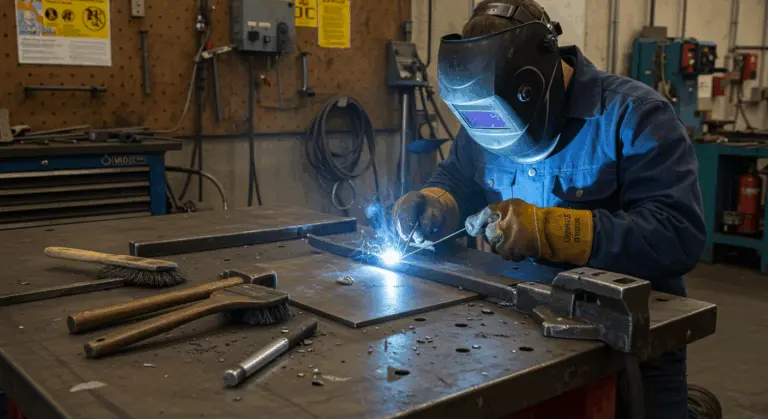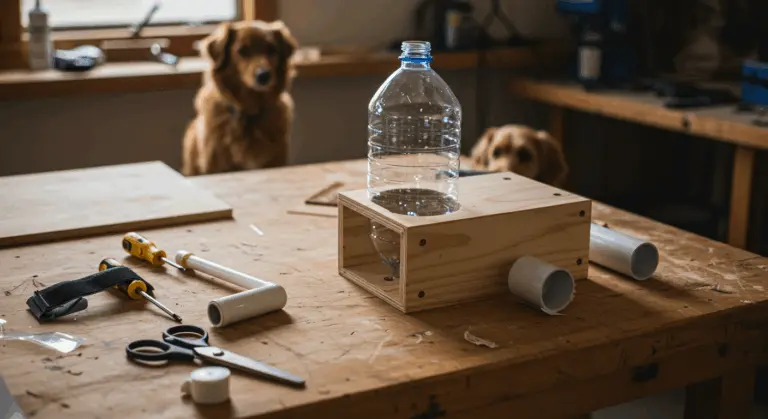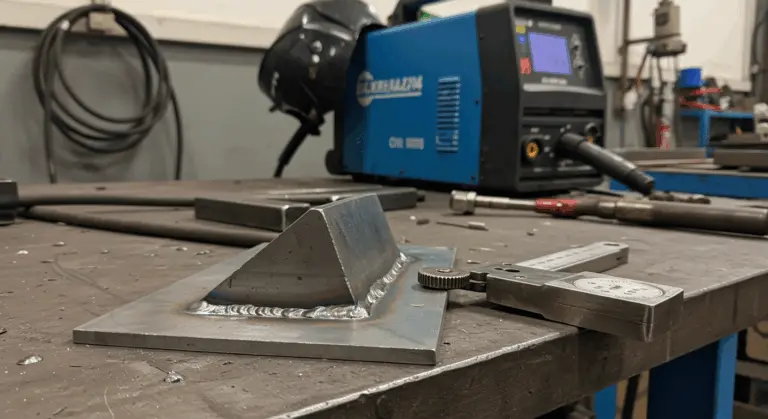The Origins of Welding – From Ancient Times to the Middle Ages
Welding—the precise joining of metals through heat or pressure—traces its roots back to Ancient Egypt around 3,000 B.C. Here, skilled craftsmen first developed the foundational techniques that evolved into today’s sophisticated processes.
Egyptian artisans pioneered forge welding, harnessing charcoal fires to heat metals until they became malleable enough to hammer together. This breakthrough enabled them to craft complex items, including remarkably durable pressure-welded swords.
This innovation in metal joining represented a major advance in technology. It laid the groundwork for increasingly sophisticated metalworking techniques that developed over thousands of years.
Prehistoric and Ancient Welding Techniques
The Bronze Age (c. 3300-1200 B.C.) witnessed craftsmen pushing the boundaries of early welding. They developed specialized tools to join softer metals like copper and bronze, creating distinct techniques tailored to different materials.
Archaeological treasures from this era demonstrate remarkable skill. Small gold boxes, created through pressure-welding lap joints, showcase the extraordinary skill of ancient metalworkers who forged strong bonds without a single piece of modern equipment.
As civilizations progressed into the Iron Age, cultures throughout the eastern Mediterranean mastered iron welding—a monumental achievement. Iron’s higher melting point posed fresh challenges, but mastering this challenge opened new possibilities in tool-making, construction, and weaponry.
The Middle Ages and Welding Innovations
Medieval European blacksmiths elevated forge welding to an art form. They heated iron in roaring charcoal furnaces, then hammered the glowing, malleable ends together to create permanent bonds. This technique became the backbone of weapon, armor, and tool production.
This era birthed two important developments that improved welding methods:
-
Sophisticated hammering techniques: Allowed for stronger, more precise joins.
-
Improved bellows systems: Enabled smiths to achieve higher forge temperatures, creating more durable welded joints.
These medieval breakthroughs, though primitive by today’s standards, represented crucial evolutionary steps in metalworking. They established the foundation upon which Industrial Revolution welding technologies would rise.
The Industrial Revolution – Transforming Welding Methods
The Industrial Revolution marked a major turning point in welding history. Industrial manufacturing’s growing demand for faster, more reliable joining methods catalyzed a dramatic transformation from manual craftsmanship to mechanized precision.
Welding evolved from a blacksmith’s intimate craft into an essential industrial process. This evolution was fueled by key improvements: coal and gas-powered forges delivered higher, more consistent heat, while deeper scientific understanding of metallurgy opened new possibilities.
These developments created the ideal conditions for revolutionary electrical welding methods. This set the foundation for modern electrical welding methods.
Key Figures in Early Welding Development
Modern welding’s foundation rests on the shoulders of visionary inventors. In 1800, Sir Humphry Davy discovered: the electric arc. This intense heat source, created when electric current leaps across a gap between conductors, wasn’t immediately applied to welding—but it provided the scientific bedrock for future arc welding processes.
The breakthrough moment arrived in 1881-1882 when Nikolai Bernardo and Stanislav Olszewski invented carbon arc welding—the first practical electric welding method. Their innovation used a carbon electrode to create an arc to the workpiece, generating sufficient heat to join metals. They quickly patented this revolutionary process across multiple countries.
These pioneers didn’t just invent a technique—they connected between traditional forge welding and the electrical methods of the future. Their work began a new welding era, enabling the stronger, more precise joins that would prove essential for 20th-century industrial advancement.
20th Century Innovations – The Birth of Modern Welding
The 20th century introduced the fundamental methods that define modern welding, fundamentally transforming manufacturing capabilities:
The Emergence of Automatic Welding
The early 1900s witnessed automatic welding’s emergence, dramatically reducing dependence on manual skill alone. Around 1920, P.O. Nobel made pivotal contributions by developing early automatic techniques featuring consistent arc and feed rates—a leap forward in weld uniformity and efficiency.
General Electric emerged as another key innovator, leveraging its electrical systems expertise to develop sophisticated power sources and control mechanisms. These concentrated efforts culminated in practical automatic welding systems ready for industrial deployment.
This transition from manual craftsmanship to mechanized precision provided two key benefits: dramatically increased production rates and vastly improved consistency. Automatic welding transformed the process into something more reliable for critical applications, simultaneously laying the foundation for today’s robotic and computer-controlled systems.
Welding Techniques and Their Evolution
Modern Welding Techniques – A Brief Overview
Today’s cutting-edge welding landscape is dominated by several revolutionary techniques:
The Impact of Welding on Industry and Society
Welding has fundamentally reshaped modern industry and society, enabling complex structural construction. It stands as a foundational technology that joins metals with the precision and strength demanded by humanity’s most ambitious engineering projects.
In automotive and aerospace industries, welding plays a vital role. It creates strong, lightweight vehicle frames that enhance both safety and fuel efficiency. Meanwhile, it joins exotic alloys in aircraft construction, ensuring the structural integrity essential for safe flight.
Welding’s transformative impact is most evident in infrastructure and construction, where it has enabled:
Welding Safety and Quality Standards
As welding technology advanced, so did the development of crucial safety and quality standards. Global organizations established comprehensive frameworks ensuring both worker protection and structural integrity, with ISO 3834 serving as a key certification demonstrating quality management capabilities.
For mission-critical applications like pressure vessel fabrication, standards from the American Society of Mechanical Engineers (ASHE) are essential. These rigorous guidelines ensure welds can withstand extreme conditions, preventing catastrophic failures in industries ranging from power generation to chemical processing.
Modern quality assurance (QA/QC) employs continuous testing throughout the fabrication process, proactively identifying and correcting issues before they become problems. This comprehensive approach, paired with rigorous safety training to prevent accidents like fires and burns, has transformed welding into a precisely controlled process with minimized risks.

